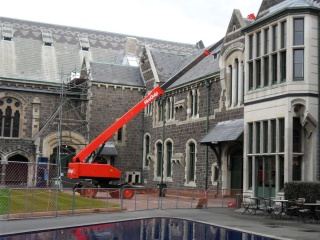Solid engineering the silver lining in quake aftermath
 An earthquake the magnitude of that experienced in Christchurch on Saturday is devastating for any city. But as the hours since the quake pass, a positive story is emerging from the scene.
An earthquake the magnitude of that experienced in Christchurch on Saturday is devastating for any city. But as the hours since the quake pass, a positive story is emerging from the scene.
The level of damage seen in modern buildings and bridges in Christchurch is much less than that caused by similar earthquakes in Kobe, Japan in 1995 or Haiti earlier this year. This can be directly attributed to exacting standards of the structural engineering profession, the city building inspectors, and the New Zealand construction industry, supported by modern earthquake engineering standards.
Earthquake engineering has been considered seriously in New Zealand since the 1855 Wellington earthquake, and improved immeasurably following the Napier earthquake in 1931. During the 1970s, New Zealand emerged as an international leader in earthquake engineering, and the results of the Christchurch quake will provide researchers with tangible evidence of where improvements must be made in future.
Members of the Institution of Professional Engineers (IPENZ) and the New Zealand Society for Earthquake Engineering were amongst the first volunteers on the scene, undertaking initial building safety evaluations and geotechnical assessments in the central city.
“Engineers from around New Zealand have been flooding IPENZ with calls volunteering their services’ says IPENZ Director of Engineering Charles Wilmott “The high standard of work our industry has undertaken up to this point means Christchurch came through a huge earthquake relatively well, and the work we undertake going forward will ensure the region is back on it’s feet as soon as possible’.
Saturday’s earthquake showed that the performance of “lifelines’ such as roads, bridges, water supplies and sewage systems is critical. Much more research is needed to understand these systems and to ensure they can better survive earthquake conditions.
In the coming weeks engineers will continue to contribute to be at the forefront of the recovery efforts, through retrofitting and repairs, restoration of vital infrastructure and ground testing and treatment.



